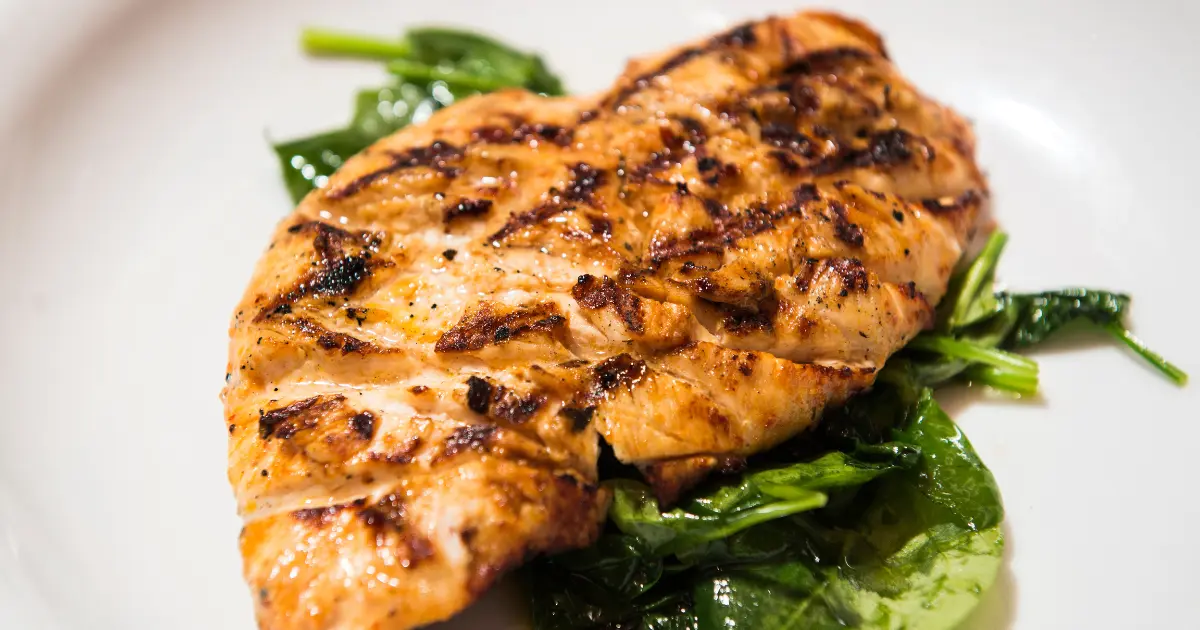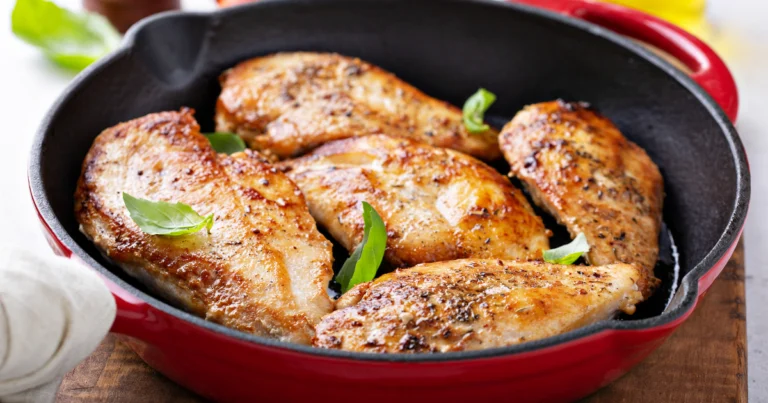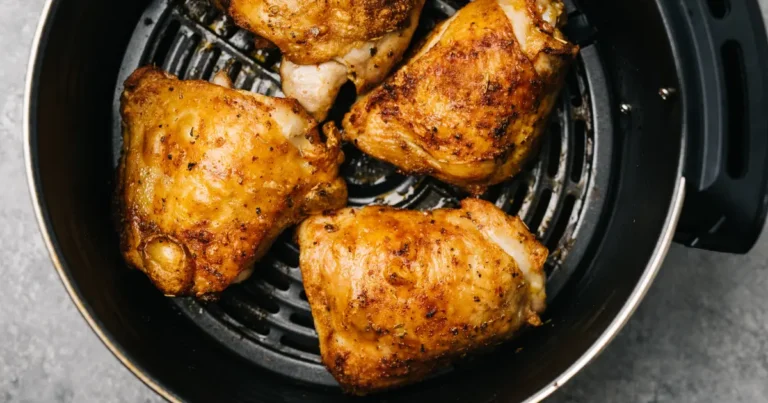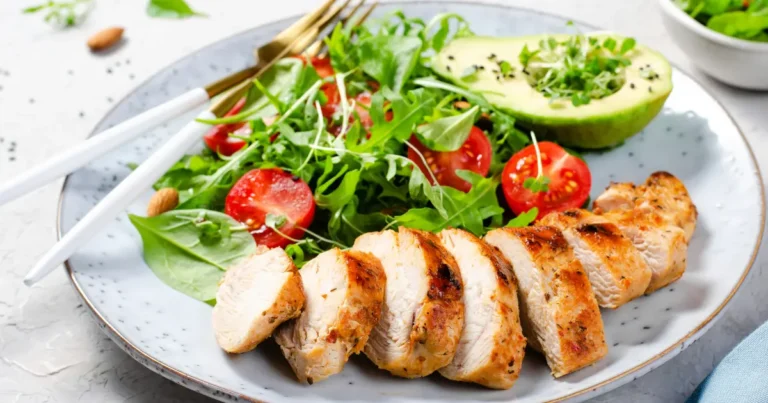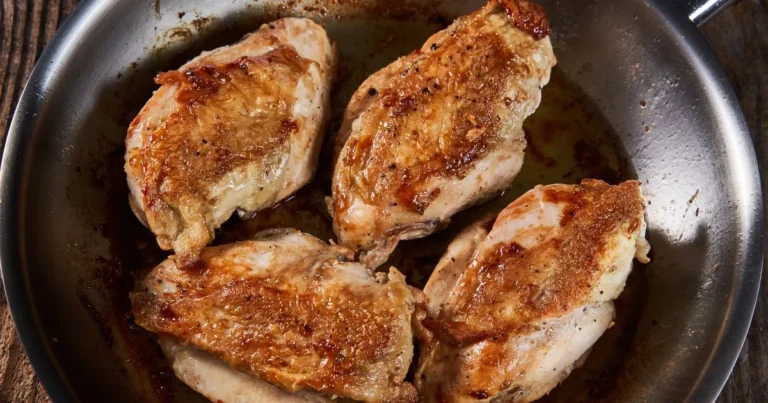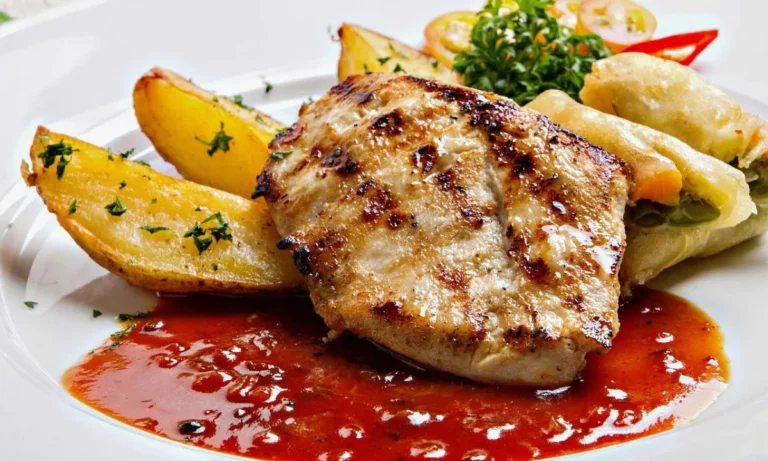Smoking Chicken Breast: How 3 Simple Tricks Change Everything
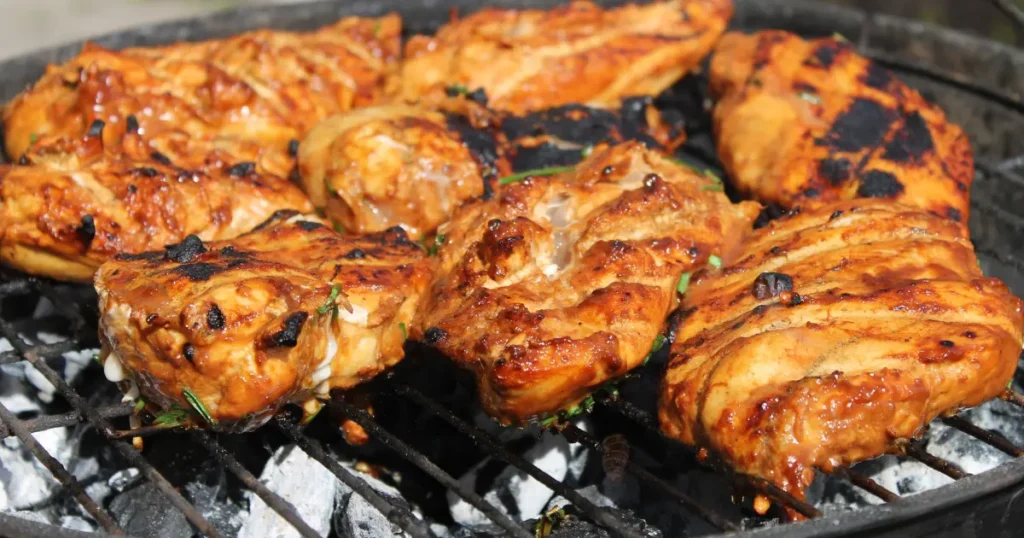
Table of Contents
Introduction
There’s something almost magical about biting into perfectly smoked chicken breast – that tender, juicy texture with a flavor that’s been slowly infused through hours of careful cooking. Yet for many home cooks, smoking chicken breast often ends in disappointment: dry, tough meat that no amount of sauce can rescue. I’ve been there too! After years of trial and error (and more than a few dinner disasters), I’ve discovered that smoking chicken breast isn’t actually complicated – it just requires understanding three game-changing tricks that professionals use.
The beauty of smoking chicken breast is that it transforms an ordinary weeknight protein into something extraordinary without requiring fancy equipment or chef-level skills. While grilling gives you quick results, smoking creates depth of flavor that simply can’t be replicated any other way. Plus, it’s incredibly versatile – perfect for Sunday meal prep, impressive enough for entertaining, and absolutely delicious sliced cold for lunch the next day.
If you’ve enjoyed my Maple-Glazed Smoked Salmon recipe, you’ll love this chicken preparation even more because it’s more forgiving while still delivering that wonderful wood-fired flavor profile. The techniques I’m about to share completely revolutionized my approach to smoking chicken, turning what was once a hit-or-miss cooking method into one of my most reliable go-to preparations.
Ready to unlock the secrets to smoking chicken breast that will have your family and friends convinced you’ve been hiding professional barbecue skills? Let’s dive in!
What is Smoking Chicken Breast?
Smoking chicken breast is culinary alchemy at its finest – transforming a humble piece of poultry into something that makes grown adults close their eyes and say “mmmmm” with their first bite. But what exactly are we talking about here? Is it just chicken with a smoky flavor? Oh no, friends, it’s so much more! Smoking is a low-and-slow cooking method where meat is cooked indirectly with aromatic wood smoke at temperatures typically between 225-275°F. The result? Chicken that’s infused with complex flavors impossible to achieve through other cooking methods. They say the way to a person’s heart is through their stomach, and I can tell you from experience that a perfectly smoked chicken breast has been responsible for more than one dinner party romance! Whether you’re a backyard BBQ novice or a seasoned pitmaster, this technique deserves a permanent place in your cooking repertoire. Why not give it a try this weekend?
Why You’ll Love This Smoking Chicken Breast Recipe:
Incredible Juiciness and Flavor
When you smoke chicken breast properly, you’ll experience meat that’s remarkably tender and juicy – completely different from the dry, stringy results that often come from other cooking methods. The slow smoking process allows the meat to retain moisture while absorbing complex flavors from your choice of wood chips. Every bite delivers a perfect balance of gentle smokiness and chicken’s natural sweetness, enhanced by a simple but effective spice rub that creates a beautiful outer bark while keeping the inside moist and flavorful.
Budget-Friendly Gourmet Experience
Creating restaurant-quality smoked chicken at home saves significant money compared to buying pre-smoked meats or dining out. Chicken breast is already one of the most economical protein sources available, and transforming it through smoking elevates an inexpensive cut into something special. A basic $12 package of chicken breasts becomes an impressive meal for 4-6 people that would easily cost $20+ per person at a smokehouse restaurant. Plus, once you master this technique, you can apply it to other affordable cuts like whole chickens or thighs for even more savings.
Versatile Meal Prep Champion
Beyond its immediate deliciousness, smoked chicken breast shines as an incredibly versatile ingredient for multiple meals. The leftovers maintain excellent flavor and texture for several days, perfect for salads, sandwiches, wraps, and grain bowls. If you love my Southwestern Chicken Meal Prep Bowls, you’ll find that substituting this smoked chicken breast takes them to another level entirely! The smoky notes complement everything from fresh vegetables to creamy sauces, making your weekday lunches something to look forward to. I often smoke extra chicken specifically for convenient, flavor-packed meals throughout the week.
Ready to transform ordinary chicken breast into something extraordinary? The simple techniques I’m about to share will revolutionize your approach to this versatile protein!
How to Make Smoking Chicken Breast:
Quick Overview
Smoking chicken breast is surprisingly straightforward once you know the key techniques that prevent dryness. This recipe delivers incredibly juicy, flavor-packed results with minimal hands-on time – just about 20 minutes of prep followed by 2-3 hours of smoking. The magic happens when three simple tricks work together: brining the meat, monitoring internal temperature precisely, and allowing proper rest time. Even if you’re new to smoking, you’ll achieve restaurant-quality results that will have everyone asking for your secrets!
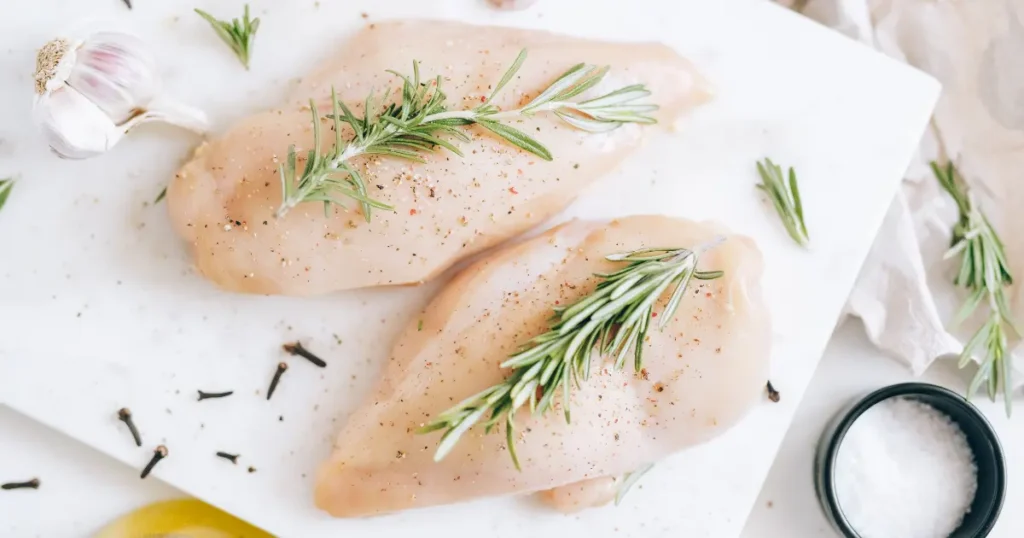
Key Ingredients for Smoking Chicken Breast:
- 4 boneless, skinless chicken breasts (about 2 pounds total)
- 4 cups cold water (for brine)
- ¼ cup kosher salt (for brine)
- 3 tablespoons brown sugar (for brine)
- 2 tablespoons olive oil
- 2 tablespoons paprika
- 1 tablespoon garlic powder
- 1 tablespoon onion powder
- 2 teaspoons dried thyme
- 1 teaspoon black pepper
- 1 teaspoon cayenne pepper (optional, for heat)
- Your choice of wood chips (apple, cherry, hickory, or maple work best)
Step-by-Step Instructions:
TRICK #1: The Game-Changing Brine
- In a large bowl, combine cold water, kosher salt, and brown sugar. Stir until salt and sugar completely dissolve.
- Place chicken breasts in the brine solution, making sure they’re fully submerged.Place in the refrigerator, covered, for a minimum of 1 hour, though 2-4 hours is recommended for best results. (Don’t exceed 6 hours or the texture will become too soft.)
- While chicken is brining, prepare your dry rub by mixing paprika, garlic powder, onion powder, dried thyme, black pepper, and cayenne pepper (if using) in a small bowl.
- Remove chicken from brine and pat completely dry with paper towels. This step is crucial for proper smoke adhesion and bark formation.
- Lightly coat the chicken breasts with olive oil, then thoroughly apply the dry rub mixture to all sides.
TRICK #2: Temperature Control Is Everything
- Prepare your smoker according to manufacturer’s instructions, aiming for a steady temperature of 225-250°F. Add your choice of wood chips once the smoker is heated.
- Insert a reliable meat thermometer probe into the thickest part of one chicken breast. This continuous monitoring is essential for preventing overcooking.
- Place chicken breasts on the smoker grates, ensuring they’re not touching each other.
- Smoke until the internal temperature reaches exactly 160°F, which typically takes 1½-2½ hours depending on the size of your chicken breasts and smoker variations.
- Do not rely on cooking time alone – temperature is your only reliable guide to perfectly smoked chicken breast!
TRICK #3: The Essential Rest Period
- Once chicken reaches 160°F, immediately remove it from the smoker.
- Place the chicken on a cutting board and tent loosely with aluminum foil.
- Allow the chicken to rest for a full 10-15 minutes. During this time, the temperature will rise to the food-safe 165°F through carryover cooking while the meat reabsorbs its juices.
- After resting, slice the chicken breast against the grain for maximum tenderness. Serve immediately for best flavor and texture.
What to Serve Smoking Chicken Breast With:
Transform your smoked chicken breast into a complete meal with these perfect pairings:
Sides That Complement the Smokiness
- Tangy Coleslaw: The cool, crisp texture and acidic dressing create the perfect contrast to warm, smoky chicken.
- Grilled Corn on the Cob: Brush with herb butter for a sweet, charred flavor that echoes the smokiness.
- Garlic Roasted Potatoes: The earthiness of potatoes with garlic highlights the chicken’s savory qualities.
Fresh Elements for Balance
- Watermelon Feta Salad: The sweet, juicy watermelon and salty feta refresh the palate between bites of smoked chicken.
- Cucumber Tomato Salad: Light, bright, and acidic – exactly what you need with rich smoked meat.
- Grilled Asparagus with Lemon Zest: Simple, quick, and adds elegant green elements to your plate.
Sauces Worth Trying
- Alabama White Sauce: This creamy, tangy mayo-based sauce is traditional with smoked chicken.
- Peach BBQ Sauce: Sweet fruit notes complement the smoke beautifully.
- Chimichurri: The fresh herbs and garlic cut through the richness perfectly.
For a complete meal that will impress any guest, pair the smoked chicken breast with coleslaw, roasted potatoes, and grilled vegetables. Finish with a light fruit-based dessert like grilled peaches with honey to complement the meal without overwhelming it.
Top Tips for Perfecting Smoking Chicken Breast:
Choosing and Preparing Your Chicken
- Consistent Sizing: Select chicken breasts of similar size and thickness to ensure even cooking. If they vary significantly, butterfly the larger pieces or use a meat mallet to even them out.
- Quality Matters: Whenever possible, choose air-chilled chicken rather than water-chilled. The texture is superior for smoking and the natural flavor comes through better.
- Trim Wisely: Remove any tough tendon portions but leave any fat – it will render during smoking and help keep the meat moist.
Wood Selection and Smoke Management
- Best Woods for Chicken: Fruit woods like apple, cherry, and peach produce a mild, sweet smoke that complements chicken perfectly. Hickory offers a stronger flavor if you prefer more intensity.
- Avoid Over-Smoking: Chicken absorbs smoke flavor more readily than beef or pork. Using too much wood or smoking too long can result in bitter-tasting meat.
- The Blue Smoke Secret: Wait until your smoke turns thin and blue rather than white and billowy before adding the chicken – this indicates clean combustion that imparts better flavor.
Troubleshooting Common Issues
- Dealing with Dry Chicken: If your smoked chicken consistently turns out dry despite following the temperature guidelines, try injecting the breasts with a simple mixture of chicken broth and butter before smoking.
- Pink Meat Concerns: Properly smoked chicken may maintain a slight pink hue even when fully cooked due to chemical reactions with the smoke. Trust your thermometer reading of 165°F over visual cues.
- Bark Formation Problems: If you’re not getting good exterior bark, make sure you’re patting the chicken completely dry after brining and consider adding a bit more sugar to your rub for better caramelization.
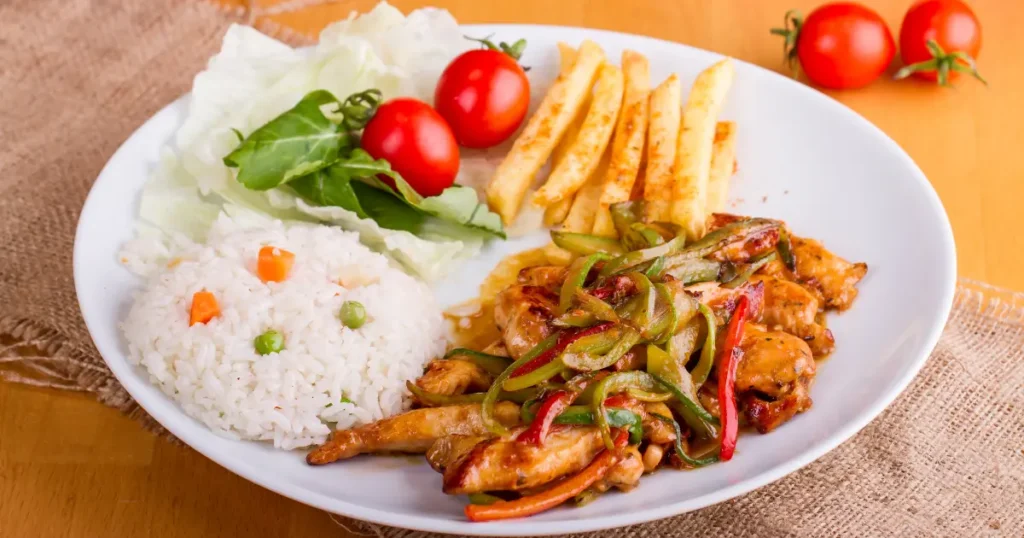
Flavor Variations Worth Trying
- Mediterranean Style: Use olive oil, lemon zest, oregano, and garlic in your rub.
- Southwestern: Incorporate cumin, chili powder, and lime zest for a Tex-Mex flair.
- Asian Inspired: Try a rub with five-spice powder, ginger, and a touch of brown sugar.
Storing and Reheating Tips:
Optimal Storage Methods
- Refrigeration: Allow smoked chicken breast to cool completely before storing. Place in an airtight container or wrap tightly in heavy-duty aluminum foil or plastic wrap. Properly stored smoked chicken breast will maintain quality in the refrigerator for 3-4 days.
- Freezing for Longer Term: For extended storage, wrap individual portions of chicken in plastic wrap, then aluminum foil, and place in freezer bags with air removed. Label with date and contents. Frozen smoked chicken breast maintains best quality for about 2-3 months but remains safe indefinitely when kept at 0°F.
- Vacuum Sealing: For optimal preservation of flavor and texture, vacuum seal individual portions or meal-sized amounts before refrigerating or freezing. This method significantly extends freshness and prevents freezer burn.
Reheating Without Drying
- Gentle Oven Method: Preheat oven to 275°F. Place chicken in a baking dish with 2 tablespoons of chicken broth or water, cover tightly with foil, and warm for 15-20 minutes until internal temperature reaches 165°F. This low-and-slow approach prevents moisture loss.
- Sous Vide Technique: If you have a sous vide device, this provides the gentlest reheating. Place sealed chicken in a water bath at 145°F for about 30 minutes. Finish with a quick sear in a hot skillet if desired to refresh the exterior.
- Microwave Emergency Method: If short on time, place chicken on a microwave-safe plate, cover with a damp paper towel, and reheat at 60% power in 30-second intervals until warmed through. While not ideal, the damp paper towel helps retain moisture.
Creative Uses for Leftovers
- Smoked Chicken Salad: Dice leftover chicken and mix with mayo, Greek yogurt, diced celery, grapes, and walnuts for a flavor-packed sandwich filling.
- Pasta Additions: Slice and add to pasta dishes with alfredo sauce – the smoky flavor adds wonderful complexity.
- Quick Quesadillas: Combine with pepper jack cheese between tortillas for a fast, satisfying meal.
- Grain Bowl Protein: Add to quinoa or rice bowls with roasted vegetables and tahini dressing for a nutritious lunch option.
Conclusion
Mastering the art of smoking chicken breast truly comes down to understanding and implementing these three simple tricks: proper brining, precise temperature monitoring, and adequate resting time. Once you incorporate these techniques into your smoking routine, you’ll never again suffer through dry, disappointing chicken. Instead, you’ll enjoy consistently juicy, flavorful results that will elevate your home cooking to professional levels.
What makes smoking chicken breast so rewarding is how it transforms an everyday protein into something special without requiring elaborate equipment or advanced culinary skills. The simple brine solution opens up the meat’s cellular structure to retain moisture, while careful temperature control ensures you remove the chicken at exactly the right moment. That final rest period completes the process by allowing the juices to redistribute throughout the meat before slicing.
Whether you’re a weekend warrior at the smoker or just beginning your journey into the world of smoked meats, these techniques will serve you well. Once you’ve experienced the difference these tricks make, you’ll find yourself eager to experiment with different wood combinations, rub variations, and serving options. Your smoked chicken breast might just become your signature dish!
I’d love to hear about your experiences smoking chicken breast. Did these tricks work for you? What wood and seasonings did you use? Share your results in the comments below, and be sure to check out my other smoking and grilling recipes for more backyard cooking inspiration!
Frequently Asked Questions
What’s the best type of smoker for chicken breast?
Any smoker will work – electric, propane, pellet, or traditional charcoal. Each imparts slightly different flavor characteristics, but the techniques remain the same. Electric and pellet smokers are the most beginner-friendly as they maintain consistent temperatures automatically.
Can I smoke frozen chicken breast?
It’s not recommended. Frozen chicken won’t properly absorb the smoke flavor and will cook unevenly. Always thaw completely before brining and smoking for best results.
How do I know if my chicken is actually done?
Always use a reliable meat thermometer. The chicken is safely cooked when it reaches an internal temperature of 165°F. With our method, you’ll remove it at 160°F and let carryover cooking bring it to 165°F during rest.
Why is brining so important for smoked chicken breast?
Chicken breast is naturally lean, making it prone to drying out during the long smoking process. Brining introduces additional moisture and salt into the meat’s cellular structure, significantly improving its ability to remain juicy.
Can I use this same method for chicken thighs or whole chicken?
Yes, though cooking times will vary. Chicken thighs can handle higher final temperatures (175-180°F) for optimal texture. Whole chickens require longer smoking times, typically 3-4 hours depending on size.
What if I don’t have time for brining?
If you’re short on time, inject the chicken breasts with a mixture of chicken broth, butter, and seasonings. While not as effective as brining, this quick method will still improve moisture retention significantly.
Can I apply BBQ sauce during smoking?
Yes, but only in the final 15-20 minutes of cooking. Applying sauce too early can prevent proper smoke absorption and may burn due to the sugar content. For best results, brush on sauce after the chicken reaches about 145°F internal temperature.
How can I get a crispier exterior on my smoked chicken?
After smoking to an internal temperature of 160°F, you can finish the chicken on a hot grill or under the broiler for 1-2 minutes per side to create a more caramelized exterior while maintaining the juicy interior.
Did you try chicken recipes ?
There are no reviews yet. Be the first one to write one.

